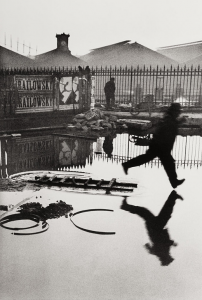Cultural Cocktail Hour
Christie’s Photographs from the Museum of Modern Art
Moments in Time
By
Leticia Marie Sanchez
Photography has become an inescapable part of our daily experience. One cannot sit in a restaurant without seeing someone snapping a photo of their spring rolls, their Tinder date, or even themselves. A few weeks ago on the Pacific Coast Highway, on a particularly crowded weekend, the man in the lane next to me took a selfie while stuck in traffic. Hopefully, police will soon be ticketing drivers for the 2017 version of DUIs: Driving under the Influence of Instagram.
For better or worse, photography is now ubiquitous.
But at one point in America history, photography was not pervasive.
In fact, as a medium it was breaking new ground in order to be recognized as an elevated genre worthy of hanging on museum walls.
An intriguing exhibit at Christie’s depicts a time when photography was first recognized as an art form.
The exhibit is in conjunction with a series of sales of more than 400 photographs from the Museum of Modern Art in New York. The sale will benefit the acquisition fund for the Museum’s Department of Photography. MOMA, founded by a coterie of “daring ladies” including Abby Aldrich Rockefeller, Lillie P. Bliss and Mary Quinn Sullivan, was the first museum in the country to establish a department devoted to photography.
The photographs being auctioned at Christie’s include works by photography pioneers Alfred Steiglitz, Ansel Adams, Man Ray, and Henri-Cartier Bresson.
What unifies the diverse iconic photographers is their ability to capture humanity through moments in time.
For instance, Henri Cartier-Bresson was influenced by 17th century Cardinal de Retz who declared,” There is nothing in this world that does not have a decisive moment.”
One of Cartier-Bresson’s photographs epitomizes the elusive, decisive moment.
The 1932 photograph, “Behind the Gare St. Lazare” depicts a mysterious black silhouette seconds before he alights from a ladder to a pool of water. The moment before his shoes get wet. Before his pants get muddy. In head to toe black, this anonymous soul could be anyone rushing to work. Yet, this is no moment of quiet desperation. Rather, the figure evokes a joyous freedom in his leap, paralleling the the image of le grand jeté, the exuberant jump of dancers featured in the posters behind him. Peeking from behind a gate, Cartier-Bresson embodies a fleeting moment poetically captured by a lens.
This image inspires us all to engage with photography to reach new heights.

Henri Cartier-Bresson (1908-2004)
Behind the Gare St. Lazare, Paris,
1932
Gelatin silver print
15 ¼ X 10 ¼ in.
Printed for Cartier-Bresson Recent Photographs, 1968
© Henri Cartier-Bresson/Magnum Photos













